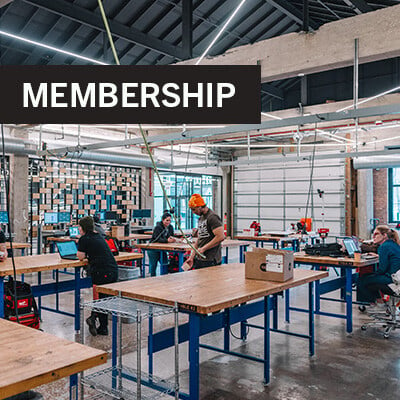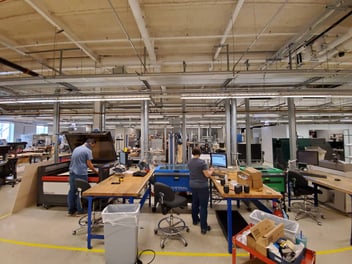The American Psychological Association estimates that between five and 10 million people in the United States suffer from Trichotillomania, a compulsive hair-pulling disorder. Trichotillomania and other body-focused repetitive behaviors (BFRBs), such as chronic nail biting (Onychophagia) and repetitive skin picking (Dermatillomania), can have painful and permanent effects, physically and mentally.
BFRBs aren't just bad habits that can be broken by sheer power of will— long-term treatment consists of identifying and treating the root cause of the behaviors, and even then, it's not guaranteed that they will stop. Many individuals suffering with BFRBs find themselves subconsciously repeating the behaviors, making it all that more difficult to combat them in the day-to-day.
HabitAware's smart bracelet is a solution for BFRBs. The bracelet's innovative technology acts as an awareness muscle trained to detect the motion of an unwanted behavior and alert the user to take back control. HabitAware also offers additional online resources such as an educational 10-video eCourse, 1-to-1 coaching, and a community of people on the same journey to manage their BFRBs.
In this mHUB Member Spotlight, learn more about HabitAware from Co-founder Aneela Idnani Kumar and Lead Hardware Engineer John Pritchard.
Where did your idea and value proposition start?
KUMAR: The HabitAware Keen & Keen2 smart bracelets came from an “aha” moment I had a few years ago with my husband, Sameer.
But first I need to take you to my youth. In my tweens, I started pulling out my hair as a coping mechanism for stress, boredom, and other triggers. It got worse when my father fell sick with cancer, but I still managed to find a way to hide the hair pulling for more than 20 years. I was so ashamed for engaging in the behavior and afraid of what others would think.
A few years ago, my husband caught me without eyebrows, right as I was going to get my black eye pencil to cover up the damage from the night before. That’s when I shared my secret: I had a mental health condition called Trichotillomania, meaning I compulsively and subconsciously pull out my hair to self-soothe.
After that, he started noticing it. One night, sitting on the couch together while we watched TV, he gently took my hand as I was pulling out my eyebrows. That was the moment I wrapped my fingers around my wrist and said, “I wish I had something that notified me.”
It didn’t exist, so we teamed up with our co-founders, HabitAware Software/Firmware CTO Kirk Klobe and HabitAware Hardware Engineer John Pritchard.
Via gentle vibration, the HabitAware smart bracelet delivers real-time awareness of these specific, trained wrist movements for hair pulling, skin picking, and nail biting, collectively known as Body Focused Repetitive Behaviors (BFRBs). With awareness, a person can now pause and choose healthier soothing strategies. In time, the goal is to retrain the brain to these strategies as the go-to, rather than the unwanted behavior.

How has the wellness technology industry and market landscape changed since you first went to market?
KUMAR: We started building HabitAware in earnest in 2016, when we attended the HAX hardware accelerator program. The industry has changed dramatically in the last six years. In the beginning it was hard to prove the issues we were solving were meaningful. “At least it’s not cancer,” said someone at a well-known insurance company when we pitched to their innovation group. I even got push back from a large mental health organization when one employee was in disbelief at the estimate that 1 in 20 Americans have trichotillomania.
Today, there is generally more awareness around mental health advocacy, and around body-focused repetitive behaviors (BFRBs) thanks to the work we and other BFRB-related organizations have done to shatter shame and stigma. More folks are willing to talk about these issues and take action to implement change.
The proliferation of mental tele-health, plus numerous apps delivering eastern practices of meditation, mindfulness, and yoga, have also helped shift the landscape to a new norm where taking care of both body and mind are acceptable.
PRITCHARD: From a technology perspective, our product was released at the advent of the Apple Watch and Fitbit. Since then, smart watches and fitness trackers have become commonplace. This has created a surge in low-cost sensors and other wearable electronic components, but also made smart bracelets a social norm. As a result, we've been able to advance our technology and reduce user acceptance barriers over time. The COVID-19 pandemic created many problems in production across all industries producing physical goods, most notably component availability and costs became challenging for small companies like us.
On the flip side, the pandemic exposed the great need for digital health technologies, especially for managing our mental health. By 2020, the ubiquity of smart watches, heightened awareness of mental health disorders, and rapid surge in telehealth, created a perfect storm that solidified these technologies as a critical need, not just a nice-to-have. HabitAware is well positioned to grow and innovate in this space.
Every startup has its highs and lows. What are some insights or pieces of advice you have for early-stage founders?
KUMAR: One of the hardest parts of entrepreneurship is trusting that if you are serving the needs of your customer, others will follow suit. This is the advice that helped me learn to see competition in a new light:
- Remember your why - It will ensure you keep going when the going gets tough
- Solve a problem that matters to you - It will help you differentiate & connect with your customers
- Look to the field of ideas - Don’t get hung up on your idea being taken. Instead, look beyond your one idea for other ideas that will help you scale your company.
PRITCHARD: As a startup developing hardware, a major challenge is creating a quality product with minimal resources, yet still adapting quickly to meet customer needs. In other words, fail fast and often. While this is a common saying in our world, moving fast requires cash-- doing this while on a budget calls for a delicate balancing act. In that light, and in hindsight, having a strong support network eased the pressure of tough times. From an engineering perspective this meant surrounding ourselves with mentors and advisors who have, collectively, seen every angle of the product development process, have experience in the trenches, and could get hands-on or provide direct connections if we were met with a crisis. This comes in many forms and can be difficult to define but having a network of smart people who provide quality guidance and genuinely care about our vision has helped us both survive and thrive.

What are some challenges or setbacks you have faced on your startup journey, and how did you navigate the more difficult periods?
PRITCHARD: We are lucky to have a team with diverse skill sets that cover nearly all the critical needs of our business. That said, when we founded HabitAware we were new to the startup ecosystem as well as launching a product we owned end-to-end. The learning curve was steep. When we launched our product, Keen, in 2016, a major technical milestone was to successfully execute our first production run. Although our beta testing was rigorous, we encountered an electronics issue that only revealed itself at scale. This issue was a delayed effect in the field, impacted a sizable portion of our customers, and was permanent for the affected customer. We addressed this on two fronts: Push an engineering solution to quickly detect and identify this in the field while fixing the root cause and maintain excellent customer service. This type of situation is not uncommon among startups. Taking care of our early adopters, quickly solving and communicating unexpected problems, and ensuring our business plan built in enough buffer for events like this were imperative activities to keep up momentum.
Of course, the COVID-19 pandemic created a myriad of challenges. Namely, component availability and pricing became excessive for small businesses. Parts with typical 6-week lead times jumped to 6-months, and the rare components jumped to a full year or more. To compound the issue, we manufacture overseas and were not allowed to manage quality control in-person anymore. Fortunately, we work with sharp, nimble suppliers who identified the bottleneck early, acquired enough stock to weather the part-shortage situation, and we worked together to rapidly implement design changes. It was a two-year fire drill that’s only now showing signs of easing, and we are excited to see the industry on its way back to normal.
How has mHUB supported your product development, business strategy, or go to market plan?
PRITCHARD: mHUB has been a fantastic place to network with other companies, share ideas and experiences, and gain insight from willing mentors. HabitAware had been established for about 6-years before I became a member. Key value-adds for us include immediate access to the engineering talent pool, shared engineering labs, and shipping and storage facilities. The quantity and variety of engineering contractors that are only a desk away has led to new opportunities for our business. The shared lab space has reduced equipment costs and increased time-to-market for efforts we’d otherwise have to outsource. The shipping and storage facilities allow us to route product through mHUB straight from the factory, if need be. Finally, the regular social events have created numerous serendipitous moments, eventually leading to business relationships.
What's on the horizon for HabitAware?
KUMAR: Through our National Institute of Health (NIH) Phase 2 SBIR research grant, we are designing, developing, and testing a holistic bracelet and app system to support healthy lifestyle change in the BFRB community. We have seen what the power of awareness can do, and our goal at HabitAware is to now use this insight to help others in underserved communities. As one example, through a recent partnership with American Printing House, a non-profit supporting the blind community, we are adapting our technology to build awareness and healthy behavior change for excessive eye pressing.
PRITCHARD: In addition to the continuous improvement of our product Keen, we were awarded a National Science Foundation (NSF) Phase 2 grant to research new behavior detection technologies. For this we are developing a research platform (hardware and software) for rapidly running behavior data collection, algorithm development, and product implementation. This is an exciting new technology that streamlines the time to market for new behavior detection wearables, ultimately helping more people with their behavior change journey.





